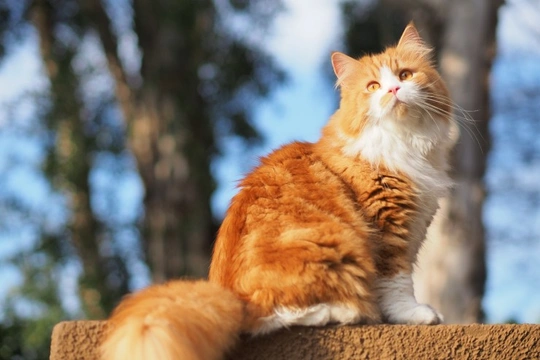
What is a traditional or doll-faced Persian cat?
Most people can instantly summon to mind a vague approximation of the Persian cat breed-usually their mental picture will involve a lot of soft, fluffy fur and of course, the breed’s signature flat face!
However, it may be of interest to know that the modern appearance of the Persian that we think of as being a very classical breed trait in terms of their brachycephalic faces is in fact a modern alteration to the traditional breed-and up until the 1940’s, the Persian cat looked very different.
Historically, Persian cats did not have the flat-faced appearance that is the breed’s signature today-they have standard pointed faces, with a delicate structure of eyes, nose and mouth. Additionally, the flatness of the breed's face is something that has become more acute over the passing decades, as selective breeding has reinforced this trait as most people’s perception of desirable. Today, Persian pedigree cats that have a normal-shaped face that is not flattish are known as traditional Persians, or doll-faced Persians.
In this article, we will look at the Persian’s traits and appearance in recent history, and explain how and why the breed has changed so dramatically in appearance over such a short period of time. Read on to learn more.
What’s changed?
The Persian cat has a long recorded history going back for several centuries, and it is only within relatively modern history that the breed’s appearance has started to change. The two most notable changes to the wider breed occurred in 1882 and 1942 respectively, with the earlier change heralding the inclusion of the chinchilla coat within the breed standard, and the later being the flat face.
The change in appearance of the breed’s face (reflected later by the formal breed standard) is undeniably the most significant change that the breed has ever gone through-and when you look at the big picture, changing the breed standard to reflect such a big alteration from a standard face shape to a flat one is fairly notable, and something that has not occurred in any other breed to date.
The change in appearance of the face of the entire breed actually happened largely by mistake-in 1942, a Persian cat was born with the now-familiar flattish face, due to a genetic mutation. This anomaly would have naturally bred itself out of the line within just a generation-but because the anomaly was considered to be desirable and good looking, breeders reinforced the gene’s presence within the breed line by selective breeding to produce further cats with the same anomaly.
This mutation first occurred as mentioned in 1942 in the UK, although within a couple of decades either side of this, the same mutation arose in a couple of other cats in other countries, where it was received with much the same enthusiasm as it was here.
The traditional Persian
Today, a Persian cat that retains the traditional appearance occurs for a variety of potential reasons:
- They are bred from an old breed line that has not become diluted by the gene mutation.
- Cats carrying the gene mutation were crossed with cats that did not carry it, resulting in a mixture of odds in terms of the face shapes of the resulting litters.
- Some modern breeders are working to reproduce the traditional or doll-faced Persian appearance, with the intent of breeding out the gene mutation from their breed pools, or not introducing it in the first place.
While the traditional or doll-faced Persian does not come close to the popularity of the modern equivalent, support for this type of variant is growing, much as can be seen in the dog world with the English bulldog, and some breeders’ attempts to produce bulldogs with a more historical (and healthy) look and core traits.
Which is better?
There is no real answer to “which is better” when it comes to people’s preferences in terms of what type of pets they own, or like the look of-but what is indisputable is that the popularity of the brachycephalic faced Persian has come at a high cost. A flat face means shortened nasal cavities and often, prominent eyes, which in extreme cases, can lead to breathing difficulties, overheating, and an increased change of eye problems. In Persian cats that are ultra-typed or overtyped, these problems can be acute, and have a serious impact on the cat’s health and quality of life.
These same issues do not arise within the traditional Persian or doll-faced Persian gene pools-however, as the potential number of unrelated cats that do not carry the mutation is lower than that of the modern version, there is also the possibility of the gene pool becoming too small to be viable without the introduction of unrelated cats to strengthen the breed.
If you are seeking a traditional or doll-faced Persian cat, you can generally find them interspersed with the adverts for modern Persian cats for saleon Pets4Homes, however you can use the keywords option in the search filter, to enter the word 'doll' which will search the advert titles. You may also want to think about finding other enthusiasts, owners and breeders on the Pets4Homes pet forums, or other spots on the internet.



